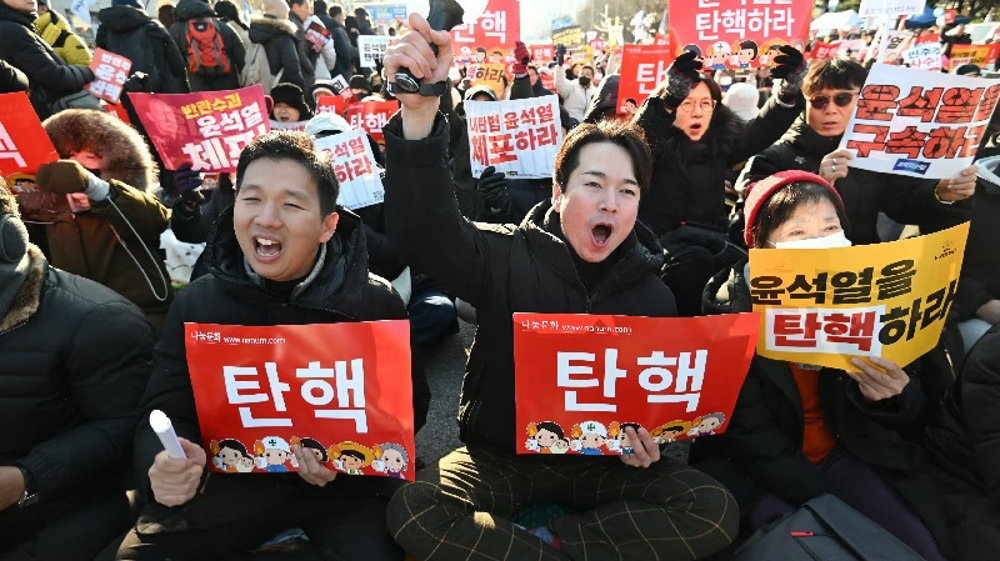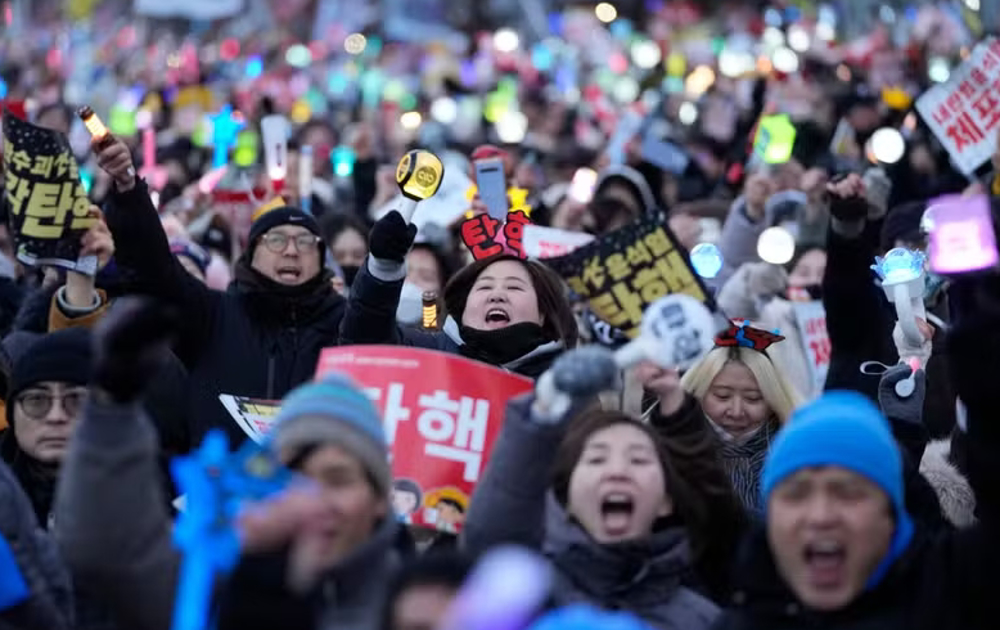1000s rally in Seoul to protest US missile deployment
Thousands of people have rallied in the South Korean capital, Seoul, against the recent decision by the government to allow the deployment of an advanced US missile system in South Korea.
The rally was held on Thursday, when the demonstrators demanded the revocation of the government’s decision to approve the deployment of the Terminal High Altitude Area Defense (THAAD).
The system is declared to be targeted against perceived threats from North Korea.
Chanting slogans against the plan, the demonstrators voiced their grievances about the possible negative health and environmental impacts that may result from the deployment of the system.
South Korean President Park Geun-hye earlier declared the implementation of the plan as “inevitable,” citing a sense of urgency to ramp up missile defense capabilities against the North.
“The government will take all necessary measures to protect the national safety and our people’s lives from North Korean threats. Our military should be fully ready to strongly retaliate against any kind of North Korean provocations,” Park said.
The decision to have the system deployed, which was announced on July 8, has been met with opposition both in South Korea as well as outside the country.
China, which shares a border with North Korea, has been voicing its opposition to the deployment of the system for months, warning that it would destabilize regional security.

Russia has also opposed the plan, arguing likewise that the missile system will undermine stability in the region and “most negatively affect global strategic stability.”
North Korea, too, has threatened to take “physical action” in response to the deployment of the missile system on the Korean Peninsula.
According to the South Korean Defense Ministry, the US missile system will be deployed in the southeastern county of Seongju, located 296 kilometers southeast of the capital, to maximize its effectiveness while minimizing any impact on residents and the environment. The ministry has also said it aims to have the system operational by the end of 2017.
Among the demonstrators in the Thursday rally in Seoul were many residents of Seongju.
Washington and Seoul began intense consultations on THAAD after North Korea conducted its fourth nuclear test in January, which was followed by a North Korean satellite launch and a string of test-launches of various missiles.
THAAD has been designed to intercept ballistic missiles inside or just outside the atmosphere during their final phase of flight.
VIDEO | Iran-Syria: For Resistance
Qassam Brigades claims killing 3 Israeli troops in northern Gaza
More alive than ever: Sayyed Hassan Nasrallah's legacy grows stronger in martyrdom
Occupation of Syria’s highest peak Mount Hermon part of ‘Greater Israel’ project
Iran: Syrian people will decide their future without foreign interference
IRGC says Iran’s power exceeds borders, warns enemies to adjust themselves
Dozens detained, several wounded in Israeli raids in West Bank
‘Ethnic cleansing’: Hamas blasts Israeli attacks on Gaza hospital amid intl. silence












 This makes it easy to access the Press TV website
This makes it easy to access the Press TV website